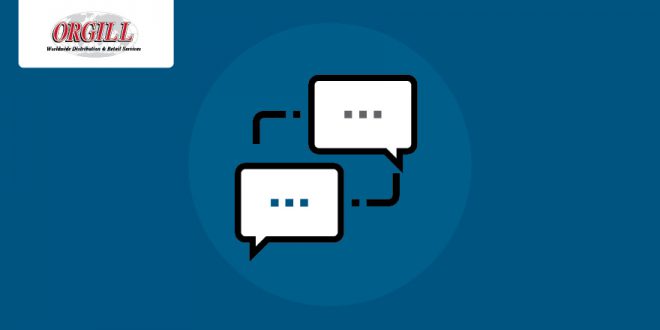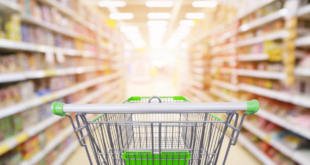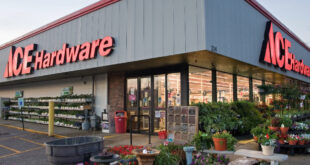Hardware Retailing spoke with a number of Orgill executives to learn more about how they serve their customers and help the company grow. Read on to hear what each has to say, or click one of the links below to jump directly to a particular Q&A.
Rebecca Rainer Partee, Director of North American Sales Support
Mark Scheer, Director of Retail Development
Learning From Others
Vice Presidents Discuss Growth, Collaboration Between Locations
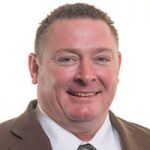
Bryce Abbott
Vice President of Distribution—Southeast
Bryce Abbott joined Orgill in 1995 and is vice president of the company’s southeast distribution center in Tifton, Georgia. Abbott manages the day-to-day operations of the warehouse and its employees.

Vic Price
Vice President of Distribution—Southwest
Vic Price serves as vice president for Orgill’s southwest distribution center in Kilgore, Texas. joined Orgill in 2000 and oversees all operations at that warehouse, which will expand to nearly 1 million square feet in 2019.
Hardware Retailing (HR): What growth has each of you seen in your respective distribution centers over the past few years?
Vic Price (VP): I oversaw building our first few distribution centers. Our center in Kilgore, Texas, opened 11 years ago, and I’ve been there ever since. When the Kilgore distribution center was built, it started with a good core number of customers we had been servicing from Memphis, when we had a facility there. About 50 percent of the Memphis volume went to Kilgore. We’ve more than doubled in size in 11 years due to the growth our company has experienced.
Bryce Abbott (BA): The Tifton, Georgia, distribution center was home to the first building expansion in 1995, and we’ve seen growth ever since. Orgill already had a strong presence in the southeast, so the growth hasn’t been to the magnitude of Kilgore’s, but we’ve still seen a good amount. We’re in a good location, close in proximity to a number of our customers. And we’ve set up a number of systems internally to provide our customers with what they need. For example, we can shuttle trucks to meet drivers part of the way into the route, which means those drivers can head out and start delivering more quickly. It gets the product to the customer faster.
VP: When we build a new distribution center, we carefully consider its placement. We want to put locations where our customer base is so we can provide them with faster delivery times. It helps our customers be more successful. With Kilgore, the warehouse helped grow our existing business. We added sales reps in that area and started branching out to other areas from there.
BA: Our coverage areas between our distribution centers overlap slightly, but internally, we’re always working to make sure we deliver the same level of customer service. We adapt to change. Our Tifton warehouse was originally 330,000 square feet, and in 2003, we doubled its size.
HR: Tell us more about the expansion that’s currently in progress in Kilgore.
VP: We’d gotten to the point that we’d run out of space. We were renting offsite storage and had to pull product from the warehouse a mile away and bring it back to our facility. Our original building had been built with room for expansion in the future, so we’re almost doubling our square footage and will be up to nearly 1 million square feet when construction is complete. We’re doing a very narrow aisle layout, which will allow us to stock more merchandise in our available space. We broke ground last October and should be in the building, fully operational, by July 1.
HR: How do the distribution center managers work together and learn from each other?
VP: We meet frequently, and we look at a lot of different metrics in the distribution centers. If one location has found a more effective way to do something, I want to learn more about it so my location can improve, too. For example, I wanted to do some additional training with my inventory control team, so a number of them went to Tifton for a week. We look at which of the facilities has the best numbers, and that location can help train other employees. It’s a bit of a friendly competition, too. We all have the same end goal, but at the same time, we all want to see what we’re doing the best.
BA: Sometimes you get in a rut if you only see what you’ve been doing, so it’s good to go elsewhere. When Orgill implements a new process or program, it’s usually done at one distribution center that serves as the pilot location for that program. Then, when everything is in order, we can roll it out to other facilities. Employees from the pilot location will visit the other distribution centers to train employees there.
HR: When a natural disaster occurs, what kinds of plans go into effect to make sure customers are provided with everything they need in a timely manner?
BA: The key is great transportation managers. Our team works closely with our sales team, who is familiar with our customer base. When something happens, they’re working at all hours to provide our customers with any assistance that they can. Our drivers are also an integral part of the process.
Hurricane Irma threw us a curveball. It was supposed to hit South Carolina, but hit the southwest side of Florida instead. We were hustling to take care of those customers.
VP: Kilgore has dealt with the same. We’ve had three or four hurricanes in 11 years. This year wasn’t bad, but Hurricane Harvey hit us bad in 2017. It’s especially important to make sure you have enough product in stock when a hurricane comes through. We’re doing a lot of transfers. The other distribution centers are involved, filling trucks and sending products to us so we have what we need for our customers.
Orgill has a whole system in place for handling hurricanes. We let customers know what items we’ll have in stock, and we’ll tell them what we consider the must-haves. And it varies based on the type of storm. With Harvey, everyone was expecting wind damage, but instead there was flooding due to all the rain. That meant a whole different set of needs.
BA: Our other warehouses will step in and fill some of our regular routes so we can dedicate more drivers to those customers affected by the hurricane. That’s in addition to them providing product for us. The sales team also has a buddy system so that if one sales rep is dealing with a natural disaster, his buddy can step in and help him and his customers. Corporate is a huge help for us, too. Rebecca Rainer Partee, our director of North American sales support, and her team really step up and provide whatever support we need at the distribution centers during times that we’re dealing with natural disasters. The whole warehouse is involved, too.
VP: We’re also lucky to have a good group of employees in the warehouse. In our business, it’s hard to say what a set end time will be. Whatever the customer ordered the night before is what we’re filling today. So our employees have to be willing to stay and work those longer days. It’s important to get the right people in and train them right. When there’s a hurricane or other natural disaster, we’ve come in early on Saturdays and Sundays, and we’ve asked our teams to stay past midnight before. We always have people who are willing to stay and help. It’s not just order filling, either—a lot of it is working with vendors. We also offer will call, so if a customer needs something immediately, we might even be able to meet them and they can load their own vehicle with that product.
HR: What are other logistics systems you’ve put in place to help improve efficiency at the distribution centers?
VP: We were ahead of the curve on the electronic logging devices we use in our trucks. These are now mandated. The system we have now is tablet-based. The old system was hardwired into the truck, so if a truck broke down, the driver needed a paper log. With the new system, the drivers connect their tablets via Bluetooth and they can bring their tablets with them. All logs are in the tablets, and this feeds into our main system.
The tablet system reports anything from speeding to lane departure to mechanical issues with the truck. The trucks also have cameras now, which help with safety measures. It’s very important to us that we keep our drivers safe. If there’s an event, such as a sudden stop, transportation supervisors get a message so they can check and see what happened.
We also offer a smartphone app for our customers so they can log in to see where their truck is and how soon their deliveries will arrive.
BA: Our drivers have taken well to this system, and our supervisors can use it as a coaching tool, too. I can’t brag enough about our drivers. They take pride in their work, and many have formed close relationships with their customers. Our customers generally see the drivers more than anyone else, and our drivers do an outstanding job of serving the customers and strengthening those relationships. We think it’s important for customers to have the same driver. Not only do they get to know each other, but the driver knows how each customer operates and knows what the customers want. Our drivers have included any necessary notes or instructions for each customer, so when they’re on vacation, the driver who’s filling in knows what to do.
Prepared for Anything
How Orgill Supports Its Customers During Difficult Times
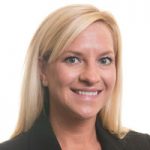
Rebecca Rainer Partee
Director of North American Sales Support
Partee joined Orgill in 2005 and worked as a marketing analyst and marketing operations manager before taking on her current role as the head of sales support, where she works closely with the sales and IT teams.
Hardware Retailing (HR): What’s the importance of having effective emergency preparation plans in place?
Rebecca Rainer Partee (RRP): Retailers need to have the right mix of supplies to meet the needs of their customers before, during and after a storm hits. They need to be able to depend on their suppliers to not only have that mix, but also have the ability to get that product to them in a timely manner.
In order for retailers to be a source of help in their community after a storm, they must have a supplier who has processes in place so both the retailer’s needs and the community’s needs can be met.
HR: How does Orgill handle its internal logistics when a natural disaster occurs?
RRP: No one can control the weather, but Orgill can help our customers be prepared to handle disasters when they hit. Communication is always important. This is especially true during a disaster.
When we’re dealing with natural disasters, each department sets up daily conference calls. Sometimes the calls are needed more than once a day. The focus of the call is always how Orgill can best help our customers in their time of need.
HR: How does each department play a role during a disaster?
RRP: The Sales Support team works as the coordinator between the departments when disasters hit.
Our Merchandising Services team works on making sure items that have been defined as “emergency goods” are in stock in the necessary warehouse, depending on the location of the natural disaster.
This sometimes means transferring goods from one of our distribution centers to another. We’re lucky to have a great group of employees who are willing to work expanded hours to get those emergency orders out the door.
Our sales team acts as Orgill’s eyes in the field. They let the home office and distribution centers know what is happening in their area after a disaster. Weather can change rapidly, and we depend on them to let us know what’s going on and what our customers’ different needs may be.
Our customer service team is always a vital part of Orgill’s disaster response. They take calls and coordinate with the distribution centers what they are hearing from customers.
HR: Can you give some examples of how Orgill has successfully served its customers during one of these times?
RRP: The damage storms cause communities is devastating. However, it’s so rewarding to know Orgill is able to directly help those affected through our work. It’s during emergencies like these that items found at hardware stores become a necessity.
We recently received some letters from our customers who were pleased with Orgill’s responses after Hurricane Michael and Hurricane Florence last year.
Specifically, those customers mentioned that they appreciated Orgill’s assistance in getting product to their stores as quickly as possible, and said the extra deliveries really helped them keep up with consumer demands.
We’re here to provide our customers with the items they need in a timely, efficient manner, and getting feedback like those letters lets us know our processes that we have in place for a disaster are working well.
Looking For a Change?
Orgill Talks New Stores, Expansions and Conversions
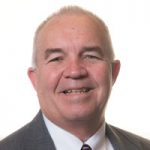
Mark Scheer
Director of Retail Development
Scheer leads the conversion team as they set stores for retailers who have converted to Orgill. He also helps retailers look closely at their markets to ensure they are accurately targeting their customer base.
Hardware Retailing (HR): What kinds of programs do you offer to customers who want to expand their businesses?
Mark Scheer (MS): Unique to Orgill is our Market Driven Retailing program. It is a market-specific approach that allows us to develop analytics for a retailer for their market. It provides measurable data to assist the retailer in focusing on their customer, and what the consumer’s expectations are when they shop for home improvement products.
The Market Driven Retailing process begins when we provide the retailer with demographics so they can compare their market to similar markets across the U.S. The process also includes a collection of data from other businesses within their market. At the conclusion of that data collection, our customer sees the results and knows specifically what it will take to compete with those other stores.
I think our Market Driven Retailingstudy is one of the things that sets us apart from other distributors in the industry. It shows exactly what a retailer needs to do when constructing a new location or updating an existing location—everything from a floor plan to product selection to what categories help make them a destination for the consumer. We look at retail pricing and know exactly what prices a store should be at. We don’t want retailers to miss any opportunities for their customers. The Market Driven Retailing study allows our customers to let their market be their compass.
HR: How do you address retailers who want to convert to Orgill?
MS:The process is a bit different for retailers who want to convert their stores to Orgill. We are dealing with an established retail environment, so we have the benefit of knowing a retailer’s purchase history and their place in the market.
With a conversion, we go through the business’s product selection and convert any products necessary to match up with the SKUs offered through Orgill. The retailer often has some products from a different supplier that are identical to what we offer, and in other categories, there might be more opportunities for them to try new products. Additionally, we evaluate their inventory to identify any missing key assortments. We plan for most conversions to take about a week. We also expect the store to stay open that week; we don’t want to have a negative impact on business. During the conversion, we remove any old product, switch bin labels, change out any signage and provide the new data to their POS company.
Stores often see an enhancement in sales after a conversion, and one reason may be due to the changes in how customers see the store. Products might have moved around, or there might be new products with different packaging.
HR: What resources does Orgill provide during these projects?
MS: We have a full store planning staff that assists with our Market Driven Retailing program. Our team captures data, and our store analysts study it. We have store planners who put together store layouts.
For anyone who wants to convert, we have a complete team of conversion managers. These retail development managers are strategically placed across the country, and their focus is to work through conversions, which have many components.
We don’t want to impact the retailer’s ability to service their regular customers, so our team works with POS providers to compare the retailer’s file to the Orgill database. We also encourage retailers to get their POS provider engaged in the process, just to make sure there’s a smooth transition.
Smart Start is also an integral part of the conversion. This program helps replace tired products with fresh, complete assortments. It’s very helpful in determining that we have the right product selection. Retailers understandably want to take a close look at any changes in inventory. We make sure their items, especially the top-selling ones, aren’t compromised.
HR: What factors should a retailer consider if they’re thinking about making the switch to Orgill?
MS: It’s important to be constantly looking at your operation; what’s working well and what might need some adjusting. How can you continue to grow? Orgill provides those tools for growth.
Conversions can be one of the most stressful projects a retailer goes through, and it’s something we do all the time, so we can really help bring that stress level down. Our teams have in-depth experience in the industry, both in building new stores and in converting existing ones. The tools Orgill offers can give your store a new look with just a small investment. This is a strategic way for you to refresh your store and reposition yourself in your home improvement market.
 Hardware Retailing The Industry's Source for Insights and Information
Hardware Retailing The Industry's Source for Insights and Information



